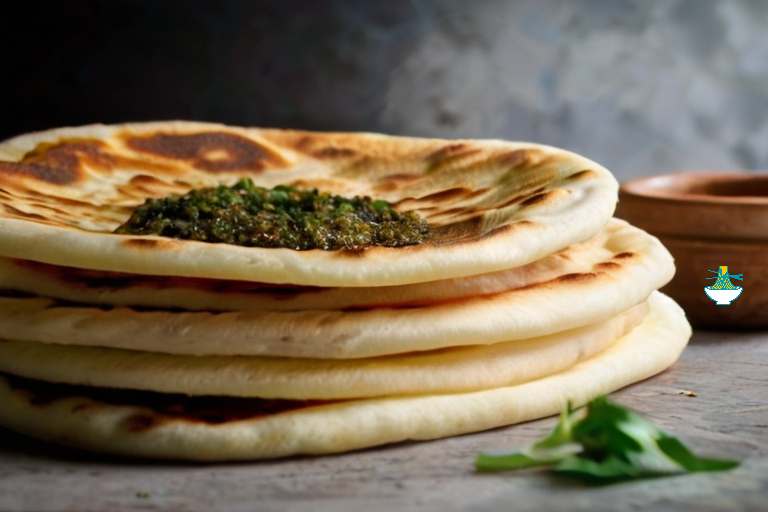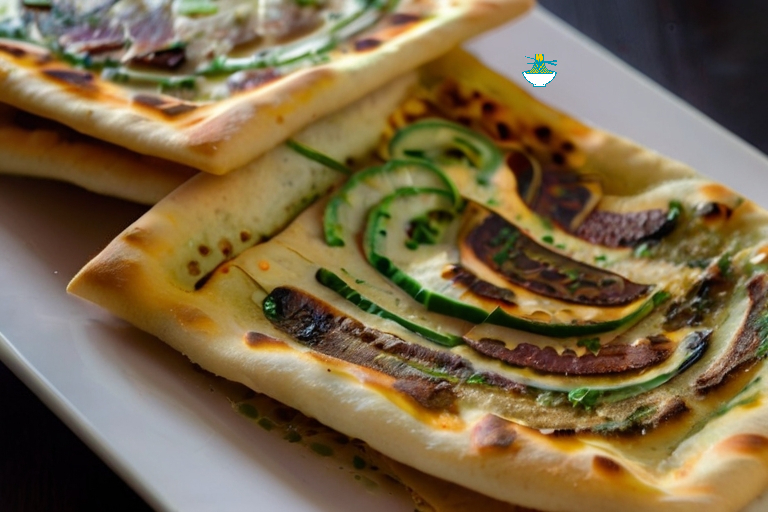Dive into the rich culinary heritage of Somalia with Sabaayad, a traditional flatbread that embodies the essence of Somali cuisine. This savory delight, also known as "Sabaayadka" in Somali, is a staple in households across the Horn of Africa, cherished for its simplicity yet remarkable taste. Made from a blend of flour, water, and sometimes a hint of spices, Sabaayad is kneaded to perfection, then rolled out thinly before being cooked on a hot griddle. The result is a golden-brown, flaky flatbread with layers that are as delightful to behold as they are to taste.
Sabaayad can be enjoyed in various ways, whether as a standalone snack, paired with a hearty stew, or even wrapped around flavorful fillings to create a satisfying meal. Its versatility makes it a favorite choice for breakfast, lunch, or dinner, offering a comforting taste of home for many Somalis around the world. Join us on a culinary journey as we explore the art of making Sabaayad and savor the authentic flavors that have been passed down through generations.
Here's a recipe for Djibouti Sabaayad:
Ingredients:
For the dough:
- 2 cups all-purpose flour
- 1 teaspoon salt
- 1 tablespoon sugar (optional)
- 1/4 cup vegetable oil
- 3/4 cup warm water
For cooking:
- Vegetable oil or ghee, for frying
For serving (choose one):
- Cooked ground meat (beef or lamb) seasoned with spices like cumin, coriander, and garlic.
- Cooked vegetables (such as carrots, potatoes, and peas) seasoned with turmeric, cumin, and chili powder.

Instructions:
1- In a large mixing bowl, combine the flour, salt, and sugar (if using). Gradually add the vegetable oil and mix until the mixture resembles coarse crumbs.
2- Slowly add the warm water, a little at a time, while mixing with your hands until a soft dough forms. Knead the dough for about 5-7 minutes until it becomes smooth and elastic. Cover the dough with a clean kitchen towel and let it rest for about 30 minutes.
3- After resting, divide the dough into 6 equal portions. Roll each portion into a ball.
4- On a lightly floured surface, flatten one dough ball into a thin circle using a rolling pin. Try to roll it out as thinly as possible without tearing the dough.
5- Brush the surface of the flattened dough with a thin layer of vegetable oil.
6- Fold the dough in half to form a semi-circle. Brush the top with oil again, then fold it in half once more to create a triangle shape.
7- Repeat the rolling, oiling, and folding process with the remaining dough balls.
8- Heat a skillet or griddle over medium heat. Once hot, carefully place a folded dough triangle onto the skillet and cook for about 2-3 minutes on each side, or until golden brown and crispy.
9- Remove the cooked Sabaayad from the skillet and place it on a plate lined with paper towels to absorb any excess oil. Repeat the cooking process with the remaining dough triangles.
10- Serve the Sabaayad warm with your choice of cooked ground meat or vegetables. Enjoy the flaky, layered flatbread with your favorite filling!
This Djibouti Sabaayad recipe offers a delightful combination of crispiness and layers, perfect for savoring alongside savory fillings inspired by Djiboutian cuisine.
Nutritional Values:
Here are approximate nutritional values for the main ingredients used in the Djibouti Sabaayad recipe:
All-purpose flour (2 cups):
- Calories: 440 kcal
- Carbohydrates: 92 g
- Protein: 12 g
- Fat: 1 g
- Fiber: 3 g
benefits:
- Provides carbohydrates, which are a primary source of energy for the body.
- Contains some protein, supporting muscle repair and growth.
- Contains small amounts of essential nutrients like iron and B vitamins.
Vegetable oil (1/4 cup):
- Calories: 480 kcal
- Total Fat: 56 g
- Saturated Fat: 4 g
- Monounsaturated Fat: 35 g
- Polyunsaturated Fat: 16 g
- No cholesterol or sodium
- No carbohydrates or protein
benefits:
- Rich in unsaturated fats, which can help reduce LDL (bad) cholesterol levels when used in place of saturated fats.
- Contains vitamin E, an antioxidant that helps protect cells from damage.
- Provides energy due to its high-fat content.
Salt (1 teaspoon):
- Negligible caloric value (typically less than 5 kcal)
- Sodium: Approximately 2,300 mg (daily recommended intake is about 2,300 mg for adults)
benefits:
- Necessary for maintaining fluid balance in the body and transmitting nerve impulses.
- Helps with muscle function and overall body hydration.
- Enhances the flavor of food when used in appropriate amounts.
Sugar (1 tablespoon, optional):
- Calories: 49 kcal
- Carbohydrates: 12.6 g
- No fat, protein, or fiber
benefits:
- Provides a quick source of energy due to its simple carbohydrate content.
- Can enhance the flavor of baked goods.
- Consumed in moderation, can be part of a balanced diet.
Warm water (3/4 cup):
- Negligible caloric value
- No fat, protein, carbohydrates, or fiber
benefits:
- Essential for hydration and maintaining bodily functions.
- Helps regulate body temperature.
- Aids in digestion and nutrient absorption.
Please note that these values are approximate and can vary based on factors such as brand, specific ingredients used, and preparation methods. Additionally, the nutritional values provided do not include any additional ingredients used for fillings or toppings, such as cooked ground meat or vegetables.


Comments